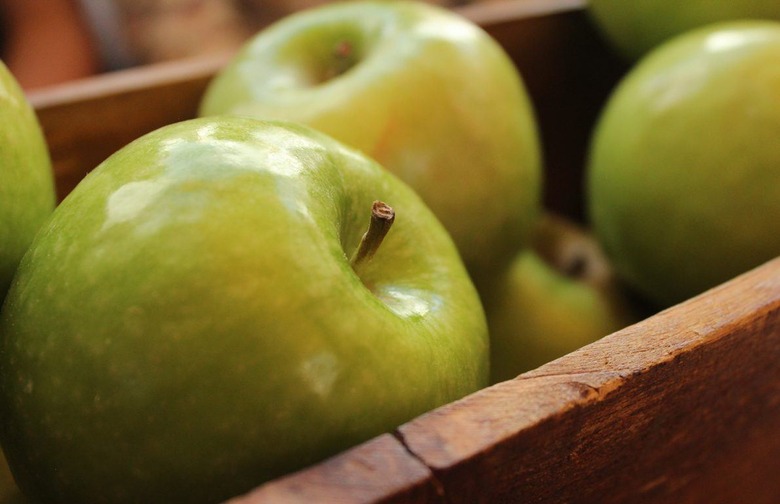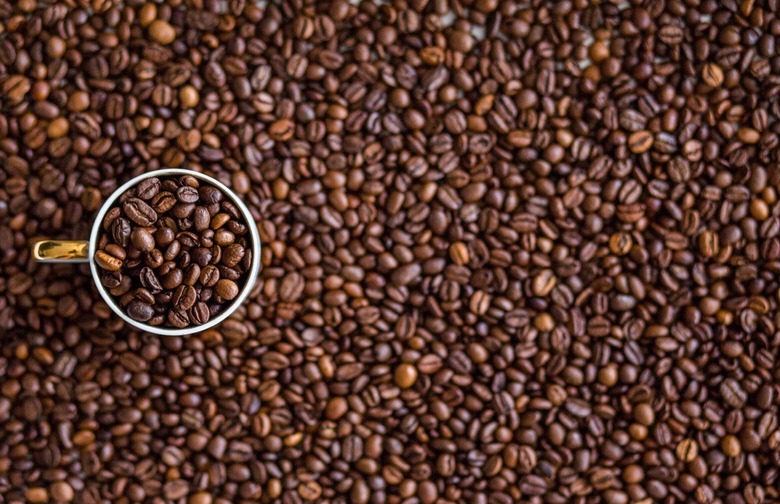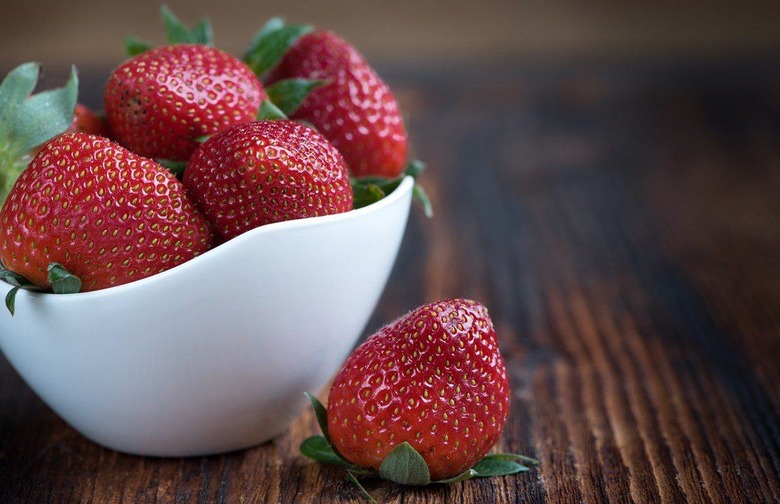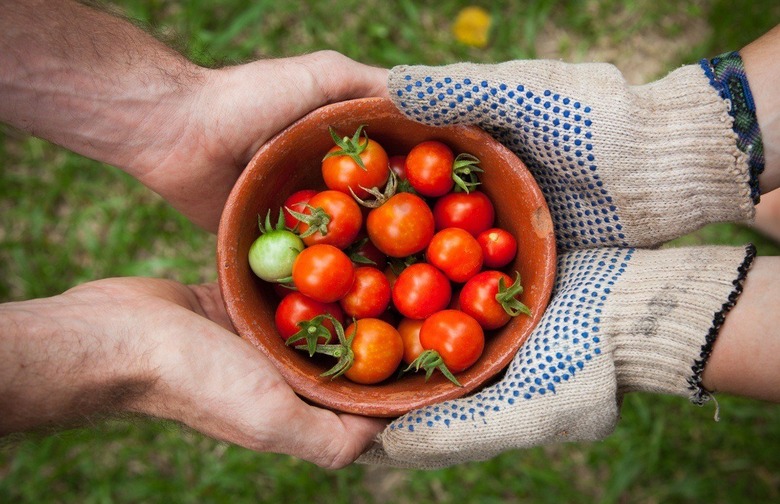What Global Warming Means For Apples, Tomatoes, And 15 Other Foods Slideshow
Global warming doesn't only influence crop yields; it also affects a food's texture and taste. Changes in temperature and weather patterns have caused apple trees to bloom prematurely, which throws off the bloom date. Japanese researchers have measured this change on the Fuji apple, and have found that they are significantly both sweeter and softer than they were 40 years ago. Whether a softer, sweeter apple will be a benefit to apple pies and turnovers is still unknown.
Avocados
Our avocado obsession is very real, with the U.S. population consuming over four billion of the mellow green fruits annually in everything from guacamole and ceviche to overnight oats and pancakes. Avocado production, however, is water-intensive, and the extreme heat and drought-like conditions are already suppressing the industry in Chile, California, Australia, and Mexico.
Bananas
Bananas are traditionally grown in tropical regions, with most of the United States' supply being imported from Central America and the Caribbean. Interestingly, bananas thrive in hotter weather, and by 2070 the land area suitable for bananas will increase by 50 percent, according to research from Bioversity International. However, higher temperatures threaten the production of coffee (see below), a crop often grown in tandem with bananas. If coffee production declines, it might not be financially viable for farmers to grow bananas.
Beans
Beans are a global ingredient found in cuisines spanning every continent, but they are especially important to the diets of sub-Saharan Africans because few other crops can be grown successfully within the region. Rising temperatures are set to cause a widespread decline in African bean production that could have some extreme impacts on global food security. African countries south of Libya and Egypt will suffer a severe decline (between 30 – 50 percent) in suitable land for cultivating beans.
Beef
The American livestock industry depends on a relatively stable climate in order to successfully raise cattle, but heat waves — which are believed to be related to climate change — stress animals and increase their vulnerability to disease, while also reducing their fertility and milk production. Droughts caused by higher temperatures may also reduce the size and availability of grazing land. Earlier springs and hotter winters provide an ideal environment for new pests and parasites that can adversely affect the health of livestock. Corn and soybean supplies are also set to diminish due to global warming, which could cause the price of feedstock (and therefore beef) to rise. In the future, a $145.49 hamburger might not even seem so expensive.
Coffee Beans
Enjoy your espressos, flat whites, and cappuccinos while they last: A report published by 80 scientists warns that two-thirds of land used for coffee bean production in Africa will be "unviable" by 2100. Drought and increased temperatures have already plagued many major coffee producing countries around the world, among them Brazil, Guatemala, and Ethiopia, and have had an adverse effect on their coffee production.
Cocoa
Cacao trees, whose pods and seeds provide us with the raw ingredients to produce chocolate, are especially sensitive to changes in temperature; they don't do well in temperate climates, but rather thrive at latitudes 20 degrees north and south of the equator. Cacao trees might be able to survive an increase in temperature, but they will fall victim to decreasing soil moisture content (also called evapotranspiration). Researchers found that 89.5 percent of Ghana's Atewa Range, one of the most productive cacao regions in the world, will likely become less suitable for growing cacao by 2050.
Lemons
Lemons and other citrus are more adept at handling rising temperatures than other fruits. Lemons thrive in the heat, with many exporting countries situated right around the equator (also known as the lemon belt). However, a dramatic rise in temperature may cause the fruits to ripen too quickly, making them bitter and inedible. Lemon production won't diminish too significantly as a result of global warming, but a changing climate does heighten the risk of crop loss due to pest infestations. It would be a shame to lose this citrus because simply drinking a glass of lemon water in the morning can completely change your life.
Milk
The dairy industry has reported that they've been dealing with problems related to climate change for years, but with temperatures on a continuous upward trajectory they will have to come up with some new solutions to supply the current level of demand. A 2015 report outlined how climatic changes will have adverse effects on the dairy industry in temperate regions like Europe and the United States. Cows are vulnerable to heat stress, which can take a toll on milk production, reproduction, and overall health of dairy cows.
Oysters
This iconic shellfish can be slurped down raw, thrown on the grill, or breaded and fried, but will oysters even be around in the next 50 years? Scientists say maybe. Global warming won't bother the oysters directly — they actually thrive in warmer temperatures — but ocean acidification, another byproduct of climate change, may contribute to their demise.
Potatoes
The russet potato is an iconic American vegetable, but you may be surprised to know that China, Russia, and India are the top three potato producers in the world. Potatoes are a key component of Asian diets because they are easy to grow and are inexpensive and nutritionally dense, but in the next two decades, global potato yields are predicted to decline between 18 and 32 percent. That said, this reduction won't affect all topographies equally; China's mountainous northern region may actually see a positive uptick in potato production.
Salmon
Wild-caught salmon has been found to be nutritionally superior to the farm-raised variety, and many consumers also claim to notice a superior taste, but wild salmon populations are at risk as a result of global warming. Salmon are comfortable at water temperatures between 55 and 64 degrees Fahrenheit, but warm weather raises stream temperatures, which makes salmon more at risk for disease, and predation Ocean acidification as a result of higher CO2 levels also dissolves the shells of tiny mollusks, a crucial food source for Pacific wild salmon.
Soybeans
Soybeans are one of nature's miracle crops: They're used in everything from animal feed and tofu to chocolate and margarine. But production of this global commodity is set to suffer in the years ahead. According to data from the World Wildlife Fund, by 2070, area suitable for soy plantations could drop by 60 percent because of water requirements and hotter summers. Ironically, soy production is actually contributing to global warming, as countries like Brazil are clearing precious rainforests in order to make the land suitable for soybeans.
Strawberries
Who doesn't love a nice, ripe strawberry plopped into a power-breakfast smoothie? Well, enjoy these berries while you can. The United States and Spain, the world's main strawberry producers, are suffering from changing climates which are throwing off the duration of the strawberry crop cycle, according to a report from the International Society for Horticultural Science.
Tomatoes
Unpredictable weather cycles have more of an impact on rain-fed crops, like tomatoes. Data shows that tomato production in areas such as Nigeria and the American Midwest have already experienced declines in yields because of climate change. More acres will have to be brought online in order to meet the current demand, but large-scale tomato cultivation requires manual labor during the harvesting season, which could pose a problem with the creation of larger farms. Stock up on your canned tomatoes now.
Wheat
Wheat is a global crop, grown in nearly all regions of the world, and is the foundation of staple carbohydrates such as breads, doughs, and noodles (yes, even ramen noodles). A research report published in the journal Nature estimates that global wheat production will decline 6 percent for each degree Celsius of increase in temperatures. Although 6 percent might not seem like a precipitous decline, scientists project that the world could get hotter by as much as 5 degrees Celsius in the coming decades. Wheat is also water-intensive, meaning that any sort of drought could send prices skyrocketing.
Wine
All this talk about climate change, reduced yields, and species extinction can get pretty bleak, but fortunately for grape growers in the French countryside, global warming may be a boon to wine production. High heat allows the grapes to ripen earlier in the season, a key attribute for highly rated wines. Research shows that global warming may also potentially redefine international wine production, with wine producers in California's Sonoma and Napa counties forced to move to higher elevations to avoid the extreme heat.
















